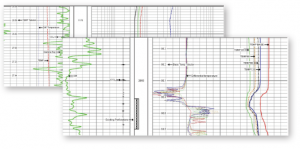Noise Temperature Tool
Features
- The noise logging tool is essentially a sensitive high-fidelity microphone. The piezoelectric crystals are housed in an oil filled chamber. A piston is used for pressure compensation
- These tools work with all multiple band noise logging systems. The warrior logging system divides the frequency spectrum into four frequency ranges.
- The option is available for cutting the gain of the downhole tool by a factor of 10 for use in wells with very high noise levels.


Noise Temperature Tool
Kodiak’s noise tool is primarily run in a cased-hole producing well environment and uses microphones to detect fluid movement. Noise is created from fluid flow inside the casing or behind the casing. Changes in noise are created as the flow rate changes or the pressure changes. The flow rates change as fluid migrates into one channel from multiple sources. Pressure changes are usually the result of an obstruction or opening in the casing. The noise log, therefore, is used for detecting channels behind the casing, flow into casing, flow out of casing, or obstructions inside the casing. Noise logs are typically created by taking multiple stationary samples and combining the data into one continuous log.
Measurements are usually taken when the tool is stationary because with the tool moving, the microphones would pick up all the road noise. The noise tool is commonly stacked with a gamma ray, casing collar locator (CCL), and temperature tool, but these tools are typically powered up using opposite polarity, enabling the noise tool to be powered up individually and recorded separately without being corrupted by electronic noise from the other tools.
